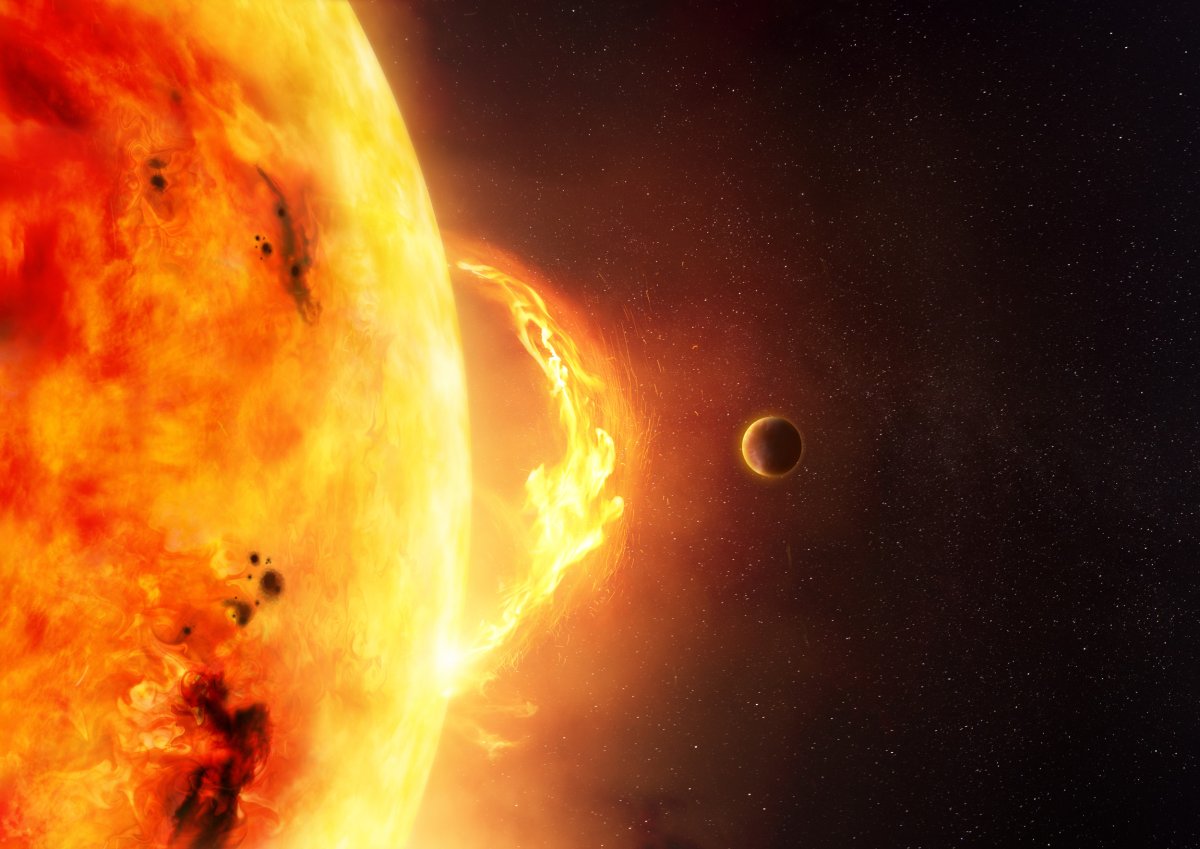The enormous sunspot that sparked the spectacular aurorae across the globe earlier this month is about to face toward the Earth again.
This sunspot, AR3664, was around 15 times as wide as Earth when it fired off a series of coronal mass ejections on May 10. These slammed into our planet's magnetic field, triggering the northern lights to be seen across all 50 U.S. states and beyond in the most powerful geomagnetic storm for decades.
This sunspot rotated away from the Earth as the sun slowly spun around, but now it's due to reappear, putting our planet in its firing line once again.
"This activity was associated with a huge sunspot, now going around the far side of the Sun, which takes about a month to rotate. A sunspot group this big typically lasts a long time so it should be visible again in a couple of weeks and come to a central "dangerous" position in about three weeks (it then takes 2-3 days for the effects to get to us)," Martin Connors, a professor of space science and physics at Canada's Athabasca University, told Newsweek just after the May 10 storms.
Sunspots are regions on the sun's surface with reduced surface temperature caused by concentrations of magnetic field activity, appearing as spots darker than the surrounding areas. This increased magnetic activity means that sunspots are prone to bursts of radiation–solar flares—and burping out huge plumes of solar plasma known as coronal mass ejections (CMEs).

When the charged particles of a CME reach Earth, they interact with the planet's magnetosphere, the protective magnetic bubble surrounding it, causing a geomagnetic storm. Depending on their strength, these geomagnetic storms are ranked on a scale of G1 (minor) to G5 (extreme).
The May 10 storm, triggered by a train of CMEs hitting the Earth, was the first G5 geomagnetic storm we have seen since 2003 and is considered to be one of the most powerful storms our planet has experienced in the past few centuries.
"G5 storms happen roughly once per decade. They're uncommon because they represent the strongest category of geomagnetic storms, which occur much less frequently than weaker events," Jim Wild, a professor of space physics at Lancaster University, told Newsweek.
The solar particles collide with the gas in our atmosphere during a geomagnetic storm, causing them to glow in the stunning colors seen during the aurorae. Different gases emit different colors: oxygen produces green and red light, while nitrogen emits blue and purple light.

Now that AR3664 is rotating back toward our planet, we may once again be at risk of powerful solar flares and CMEs heading our way.
The sunspot is clearly still very active. Only yesterday, it was seen throwing out an X2.8-class solar flare that sparked a radio blackout over East Asia and was accompanied by a CME that missed the Earth. It should be fully facing the Earth by the end of the week and could lead to more uncommonly widespread northern lights.
"I would say make a note in your calendar to be alert for auroras starting about three weeks from now," Connors said three weeks ago.
Do you have a tip on a science story that Newsweek should be covering? Do you have a question about sunspots? Let us know via science@newsweek.com.
Uncommon Knowledge
Newsweek is committed to challenging conventional wisdom and finding connections in the search for common ground.
Newsweek is committed to challenging conventional wisdom and finding connections in the search for common ground.
https://ift.tt/4wLmxAM
Science
No comments:
Post a Comment